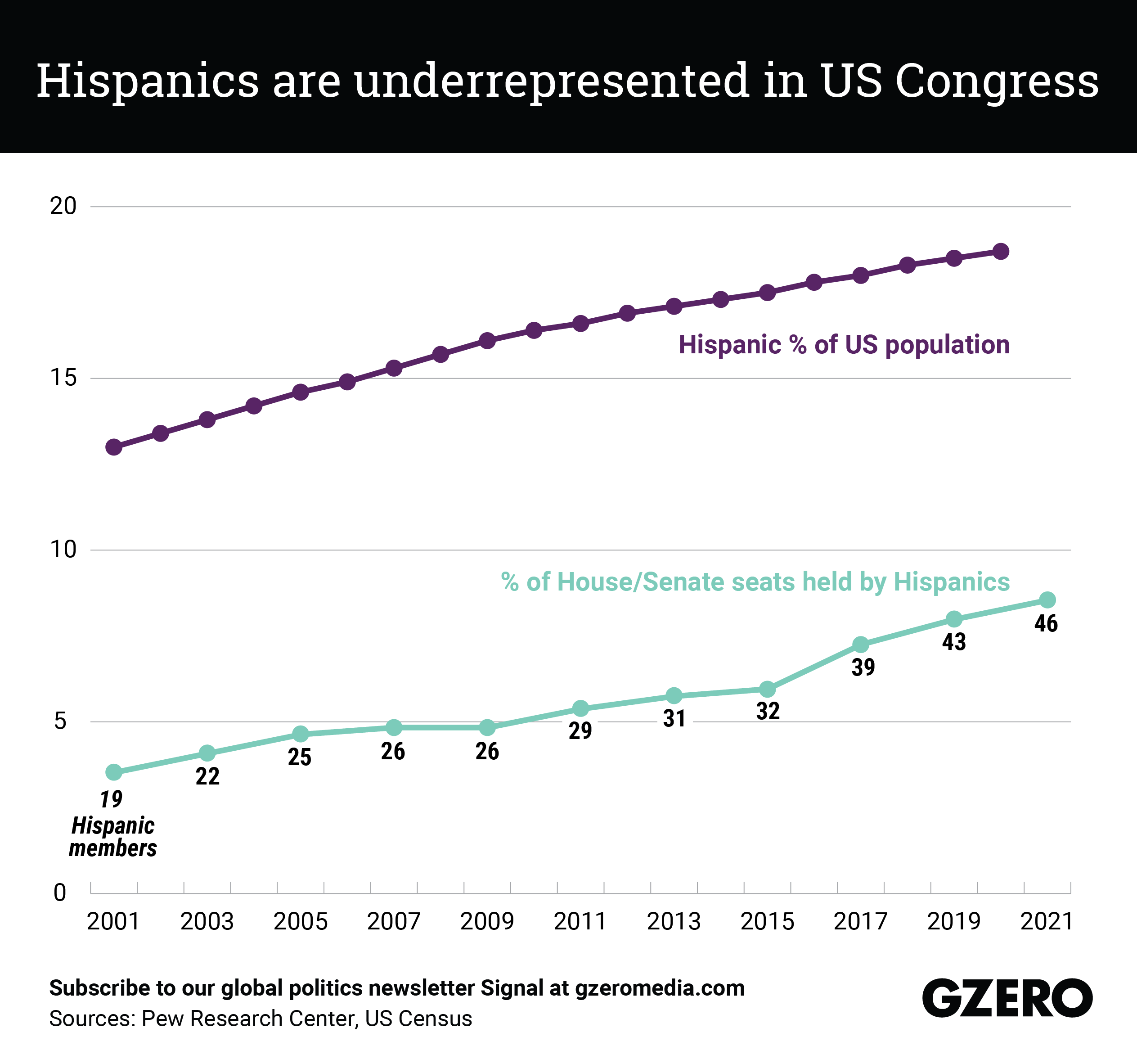September 29, 2021
After Asian Americans, Hispanics are now the fastest-growing ethnic/racial group among the US population, and contributed half of America's population growth over the last decade. But although Hispanics make up 19 percent of the general population today, they hold less than one-tenth of seats in Congress. Will this change significantly by 2060, when the Hispanic share of the US population is projected to reach 28 percent? To mark Hispanic Heritage Month, we take a look at Hispanic representation in the House and Senate, compared to Hispanic share of the population, over the last 20 years.
More For You
- YouTube
In this episode of "ask ian," Ian Bremmer breaks down Notre Dame football.
Most Popular
Geoffrey Hinton, the ‘Godfather of AI,’ joins Ian Bremmer on the GZERO World podcast to talk about how the technology he helped build could transform our lives… and also threaten our very survival.
- YouTube
Is the AI jobs apocalypse upon us? On Ian Explains, Ian Bremmer breaks down the confusing indicators in today’s labor market and how both efficiency gains as well as displacement from AI will affect the global workforce.
Members of the Uyghurs diaspora gather in front of Alberta Legislature during the protest 'Stand in Support of East Turkistan' to commemorate the 1990 Barin Uprising, on April 6, 2024, in Edmonton, Alberta, Canada. The East Turkestan independence movement seeks the region's independence for the Uyghur people from China. They advocate renaming the region from Xinjiang to East Turkestan, its historical name.
Photo by Artur Widak/NurPhoto
Remember Xinjiang? There was a time, not long ago, when China’s crackdown on the Uyghurs, a Muslim minority group living in Xinjiang province in Northwestern China, was a hot topic. But these days the attention has faded.
© 2025 GZERO Media. All Rights Reserved | A Eurasia Group media company.
